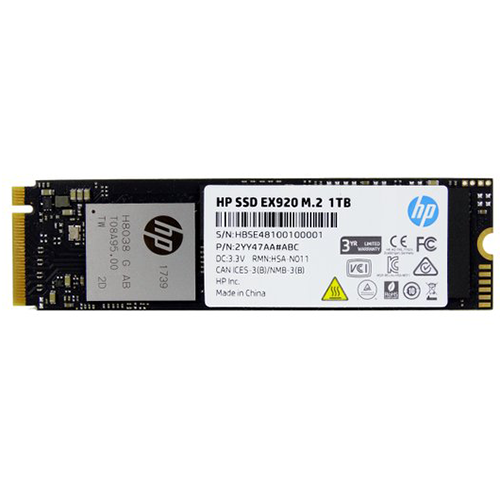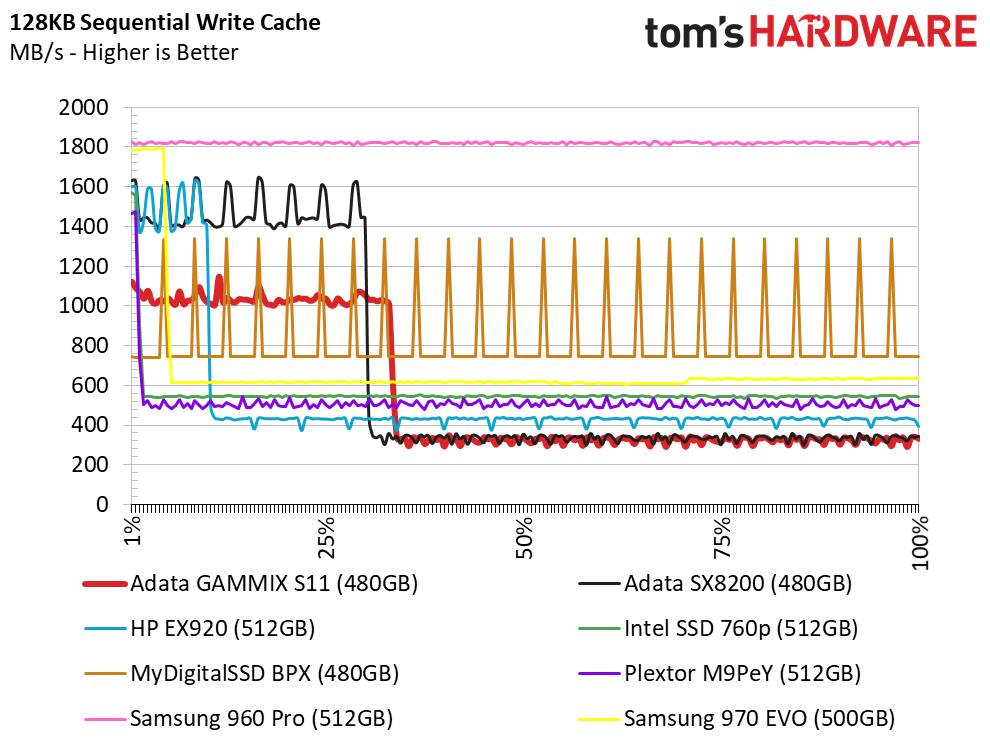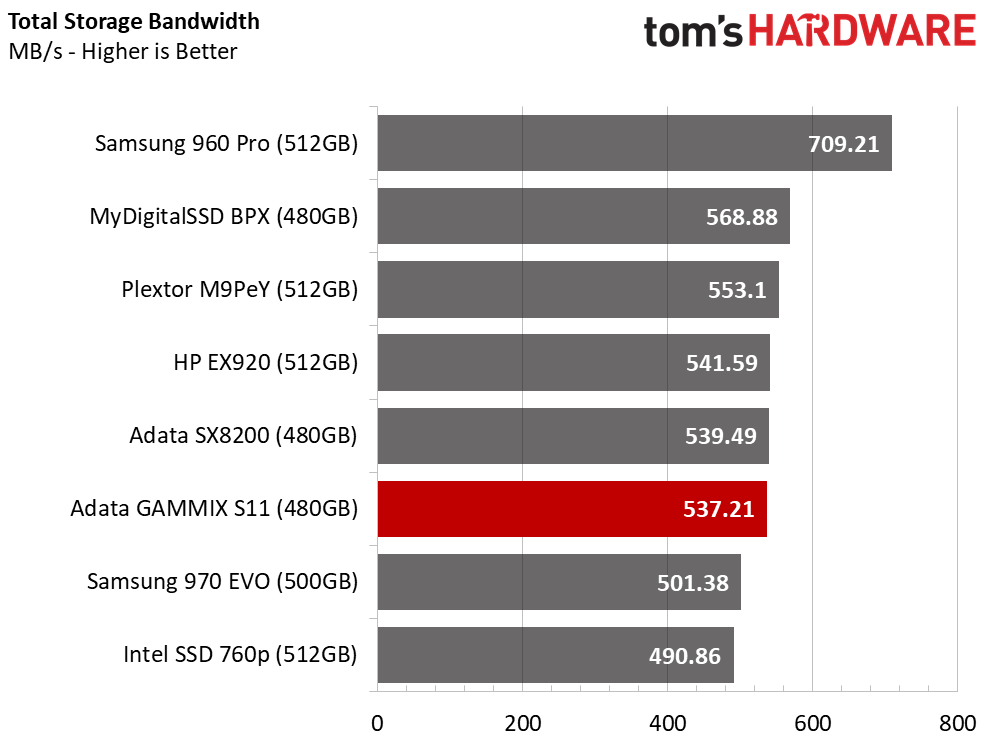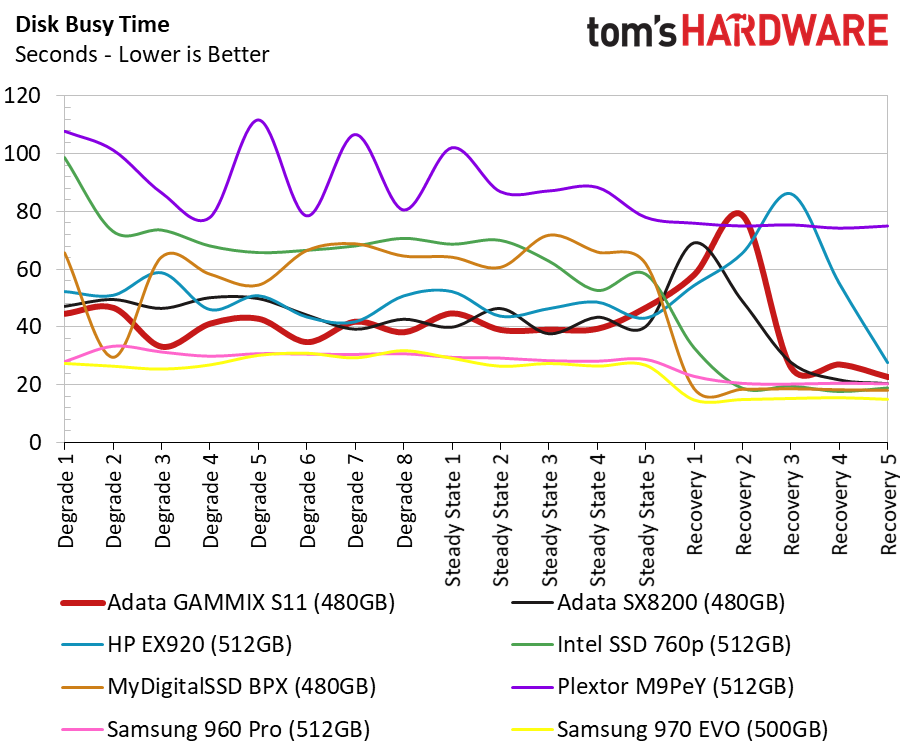Adata XPG GAMMIX S11 SSD Review: The Pricey Heatsink Option
Why you can trust Tom's Hardware
512GB Class Performance Testing
Comparison Products
We included the low-cost SX8200 in our charts along with the 512GB HP EX920 and Intel 760p that all use the same SMI SM2262 controller. The Adata and HP drives have Micron 64-layer TLC flash that differs slightly from the Intel 3D Gen 2 (also 64-layer TLC from the same factory as the Micron flash). The difference between the flash mainly consists of different programming and other proprietary IP.
We also included the MyDigitalSSD BPX and the Plextor M9Pe. Samsung's new 970 EVO and aging 960 Pro round out the list.
Sequential Read Performance
To read about our storage tests in-depth, please check out How We Test HDDs And SSDs. We cover four-corner testing on page six of our How We Test guide.


Where did the red line go? The GAMMIX S11 is so much like the SX8200 that the black and red lines overlap through most of the scaling test. There is a little variation at queue depth (QD) 128, but that measurement is irrelevant during normal desktop-class workloads.
At QD2, the three SM2262 SSDs with Micron 64-layer flash trail only the Samsung 960 Pro workstation-class NVMe SSD. The GAMMIX S11 pulls ahead of the Samsung 970 EVO by over 500 MB/s at QD2.
Sequential Write Performance
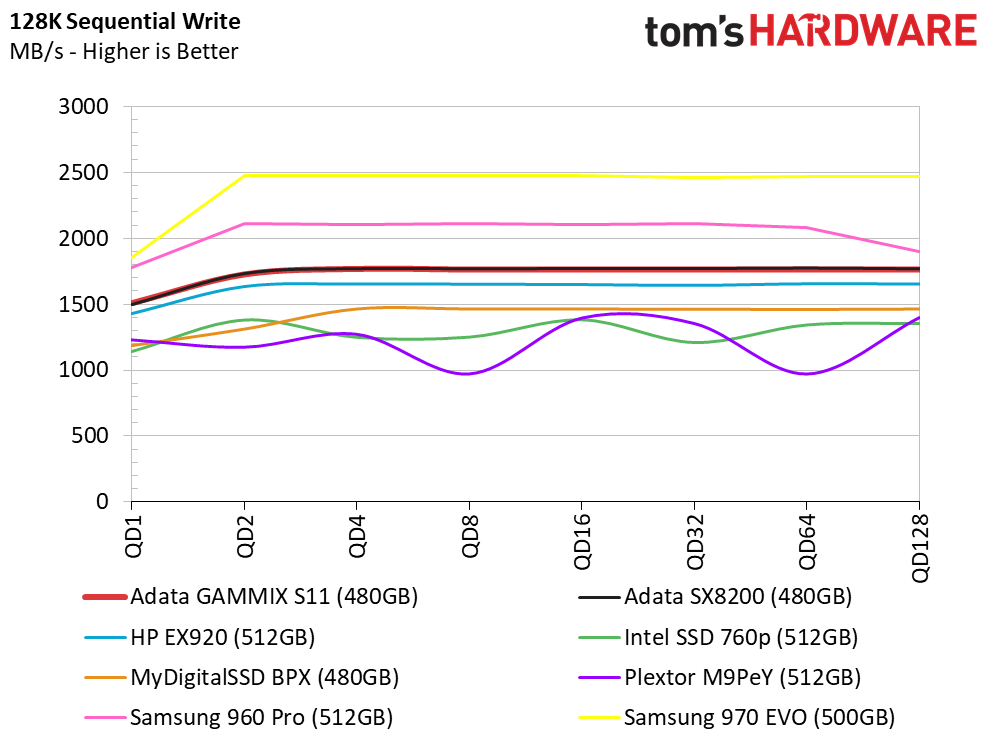
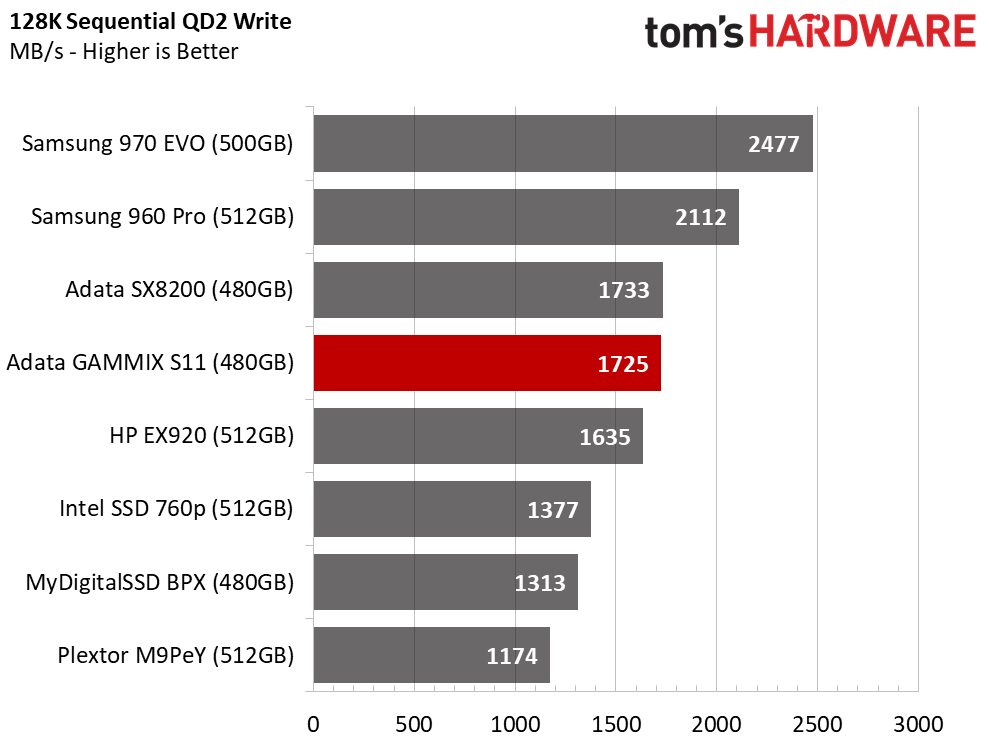
The two nearly-identical Adata drives also overlap in the sequential write test. The SM2262 controller is still not able to write data faster at QD1 than Samsung's five-core Polaris and Phoenix processors. The SM2262-powered drives also fall well short of Samsung's exemplary sequential write performance.
Sustained Sequential Write Performance
The story changes slightly after the SLC buffer is saturated. The 970 EVO's SLC buffer writes data faster than the other TLC-based drives, but the capacity of the EVO's buffer is smaller than the SM2262's dynamic cache. The Intel drive also differs from the Adata and HP drives that have more than double the buffer capacity. Unfortunately, the two Adata SSDs have the lowest native TLC write speed of all the drives, so workloads that spill outside of the buffer will suffer.
Get Tom's Hardware's best news and in-depth reviews, straight to your inbox.
Random Read Performance


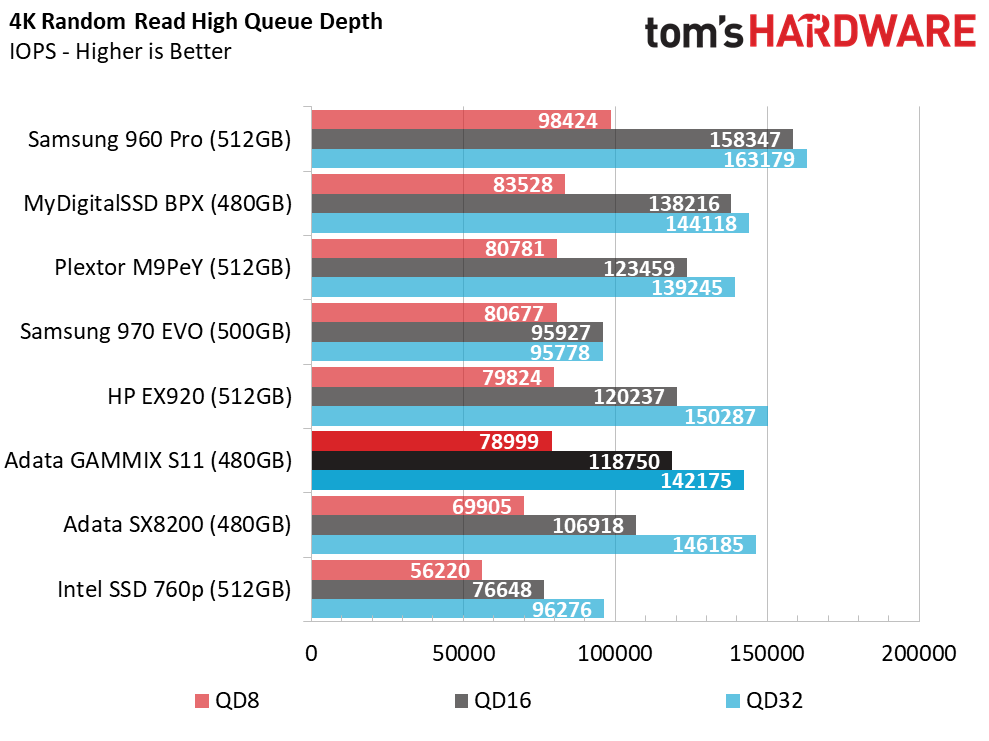
The high random read performance makes the Adata XPG GAMMIX S11 a powerful drive for mainstream users. The 480GB drive can burst past 15,000 IOPS at QD1, which is faster than the 960 Pro and the new 970 EVO. The drive scales really well as we intensify the workload.
Random Write Performance
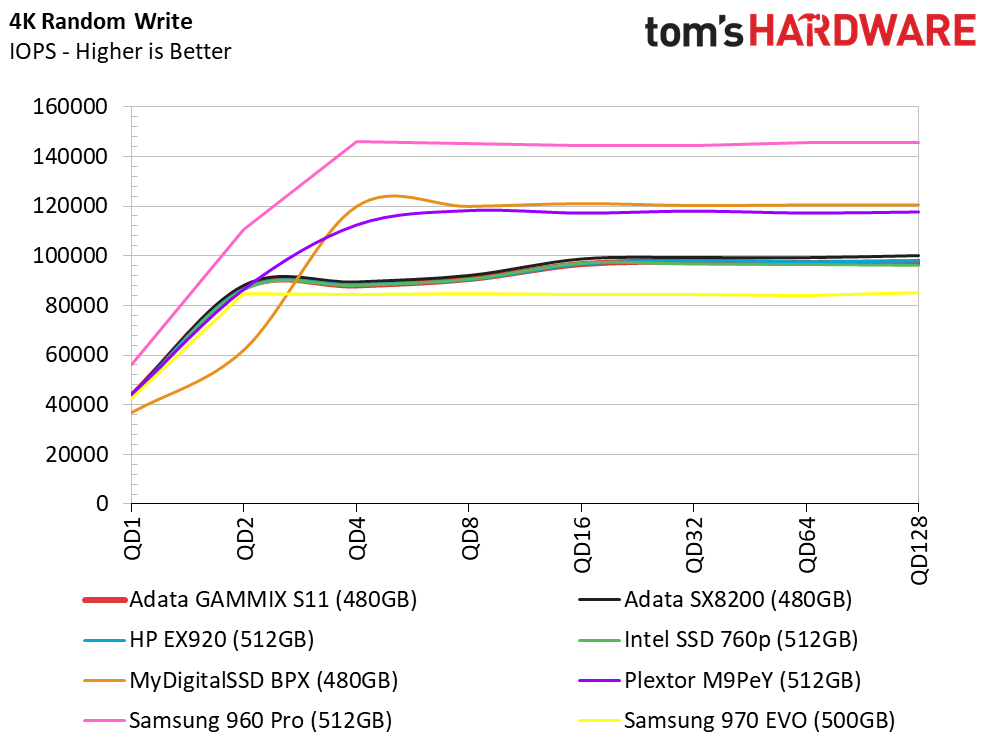


At low queue depths, the GAMMIX S11 delivers strong random write performance.
70% Mixed Sequential Workload
We describe our mixed workload testing in detail here and describe our steady state tests here.

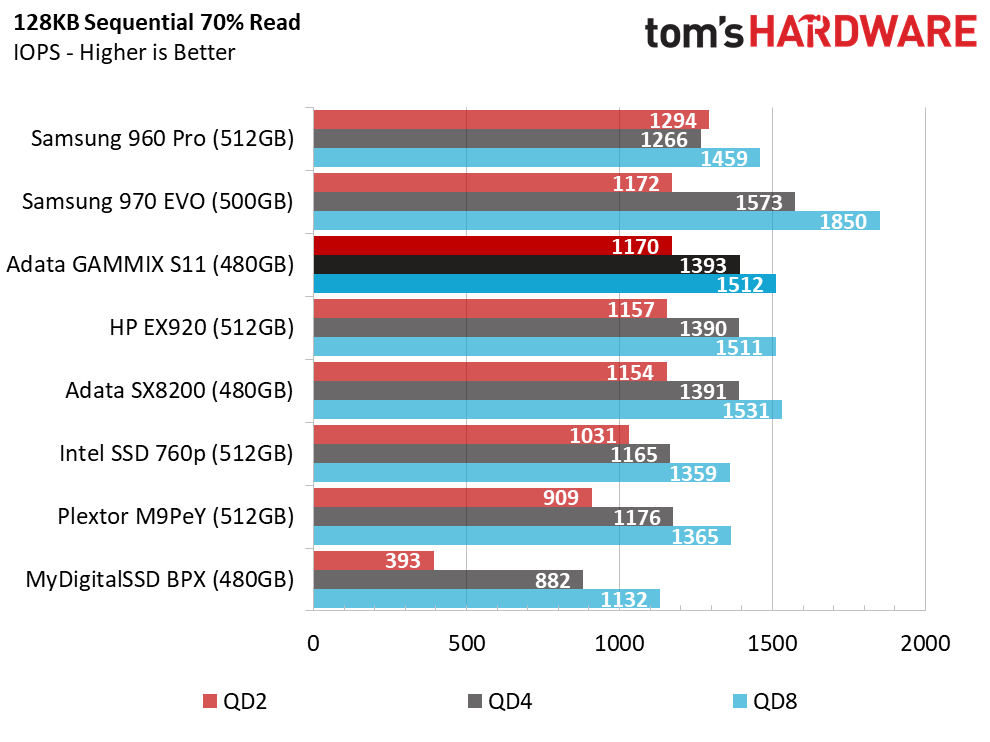
Mixing sequential reads and writes taxes the controller as data passes in both directions. The SMI SM2262 performs very well given its four ARM Cortex-R5 cores. In contrast, the Samsung 960 and 970 series both use five-core ARM processors that edge out the GAMMIX S11. At QD2, the GAMMIX S11 is only 2 MB/s away from the 500GB 970 EVO.
70% Mixed Random Workload
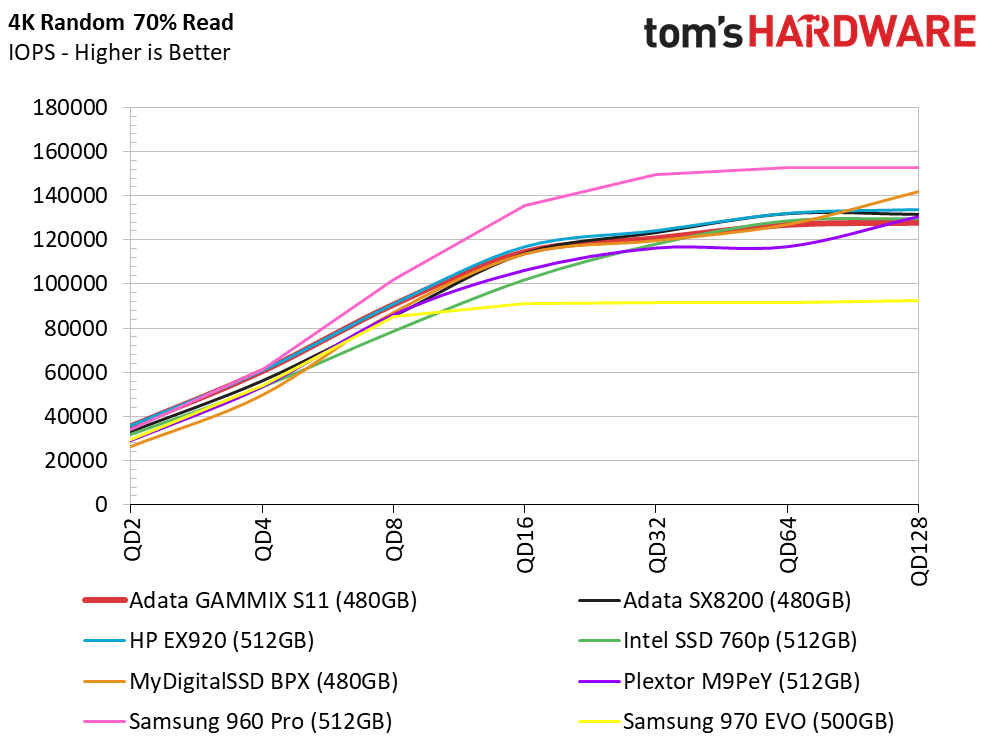

Three of the top four SSDs in the mixed workload test come equipped with the SMI SM2262 controller. Again, the S11 scales nicely as we intensify the workload. The results from this test should carry over to strong application performance later in the review.
Sequential Steady-State


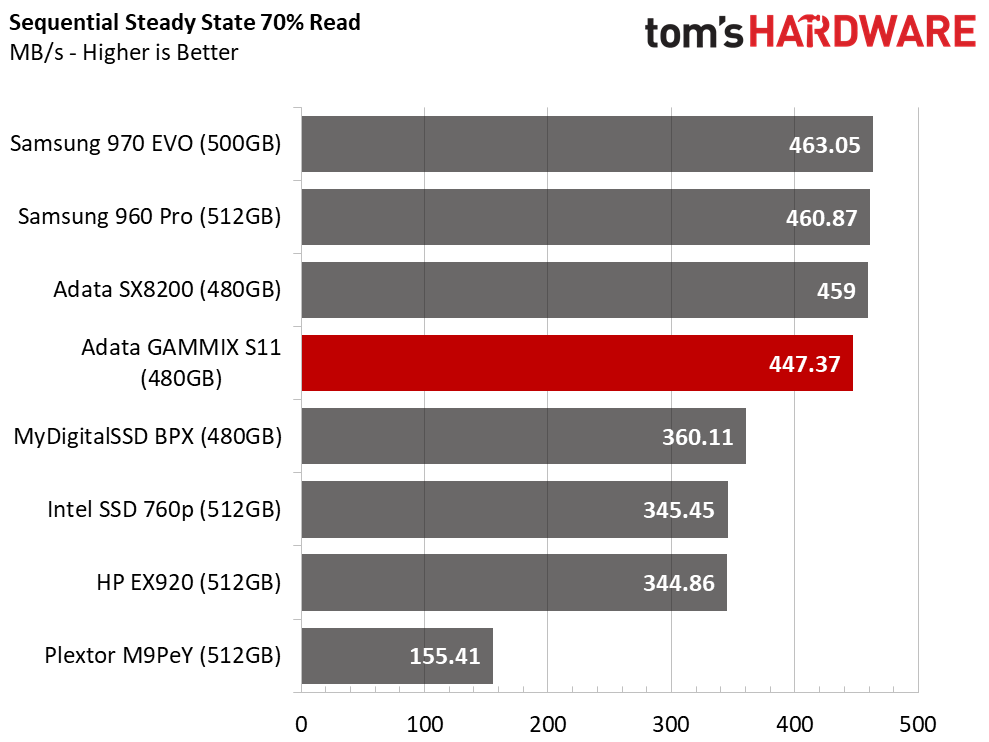
This is one of the tests where the heatsink could make a difference between the SX8200 and GAMMIX S11. We tested the SX8200 with the included heatsink that ships with the drive, but it doesn't fully mate with the controller.
Because of the contact location, we feel the heat sink on the SX8200 does a better job of keeping the SM2262 controller cool than the GAMMIX S11's heat sink. Our test results show a slight, but definite, performance increase with the SX8200's full-contact cooling.
Random Steady-State

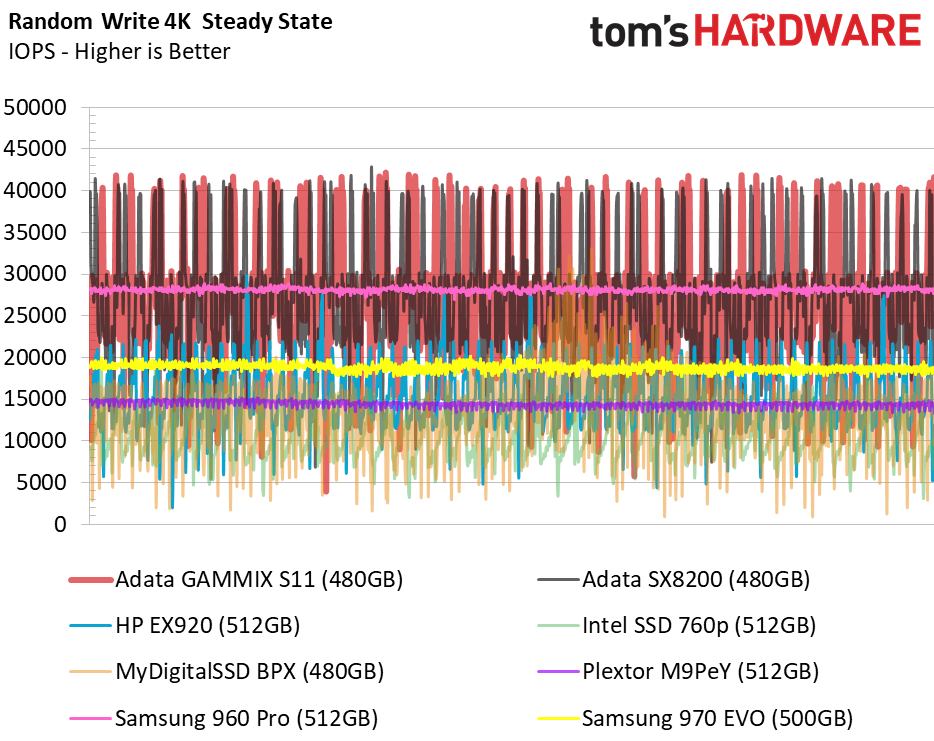
TLC flash, even new 64-layer 3D TLC, is wildly inconsistent once the workload spills outside of the SLC buffer. That inconsistency has largely made our random steady-state test unreadable. The Samsung 960 Pro, 970 EVO, and Plextor drives all perform well under the heavy workload.
The other drives, including those with the SM2262 controller, all have major consistency issues. This is less of an issue with this group of drives than you may expect, though. For desktop PC-class workloads, the GAMMIX S10's large SLC buffer provides a sustained high level of performance. The buffer on this drive is also large enough to smooth performance during heavy multitasking.
PCMark 8 Real-World Software Performance
For details on our real-world software performance testing, please click here.

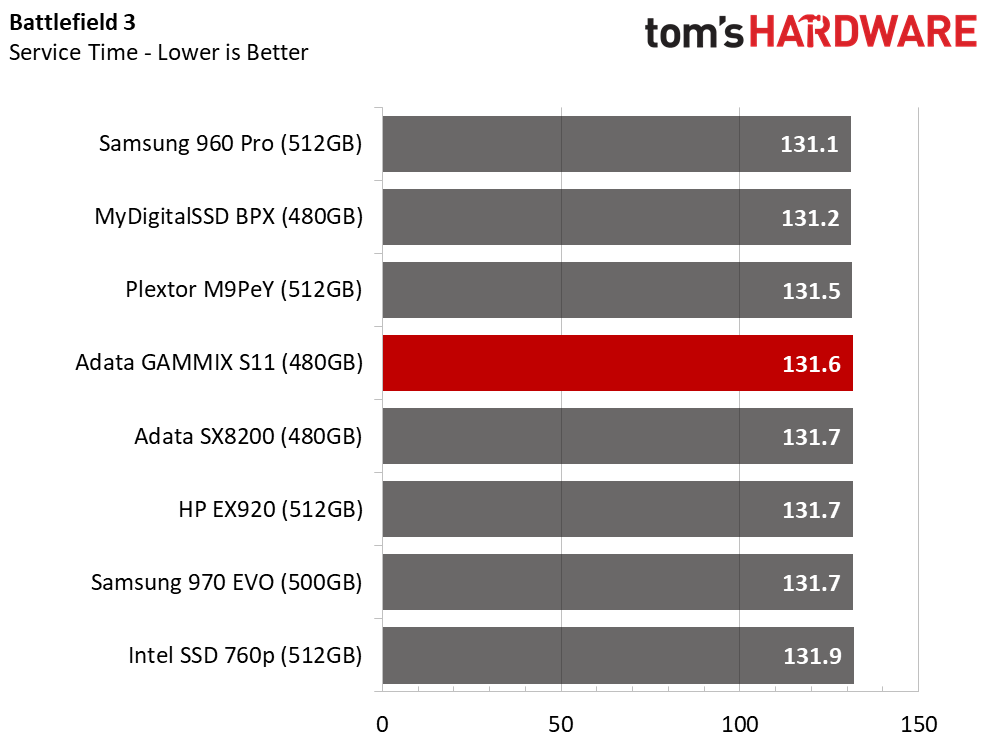
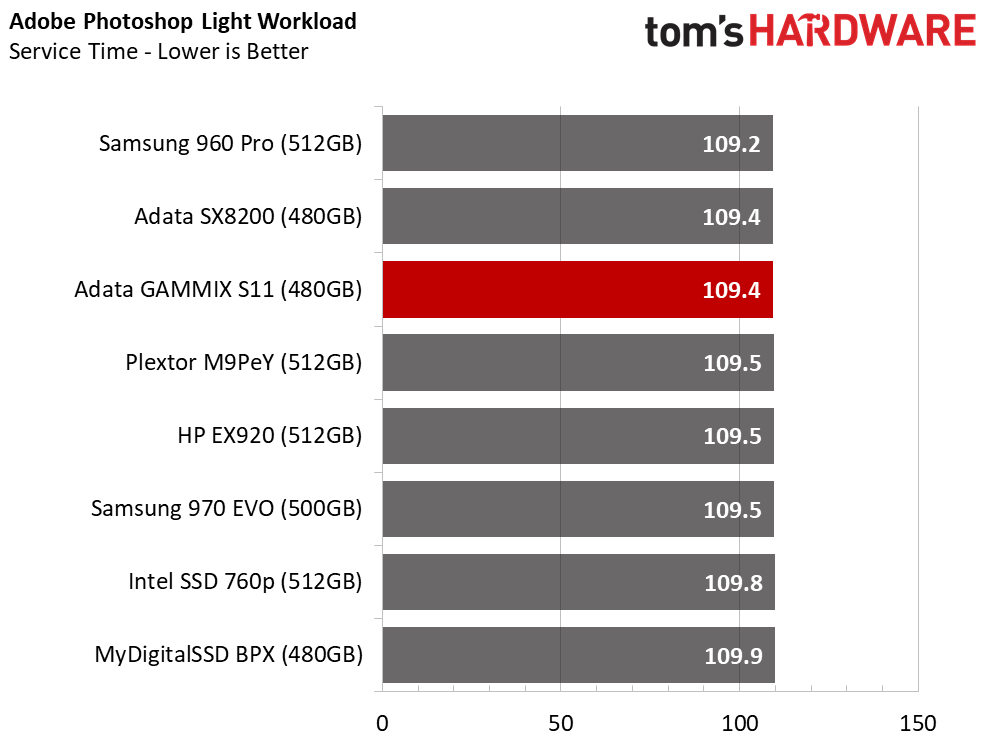
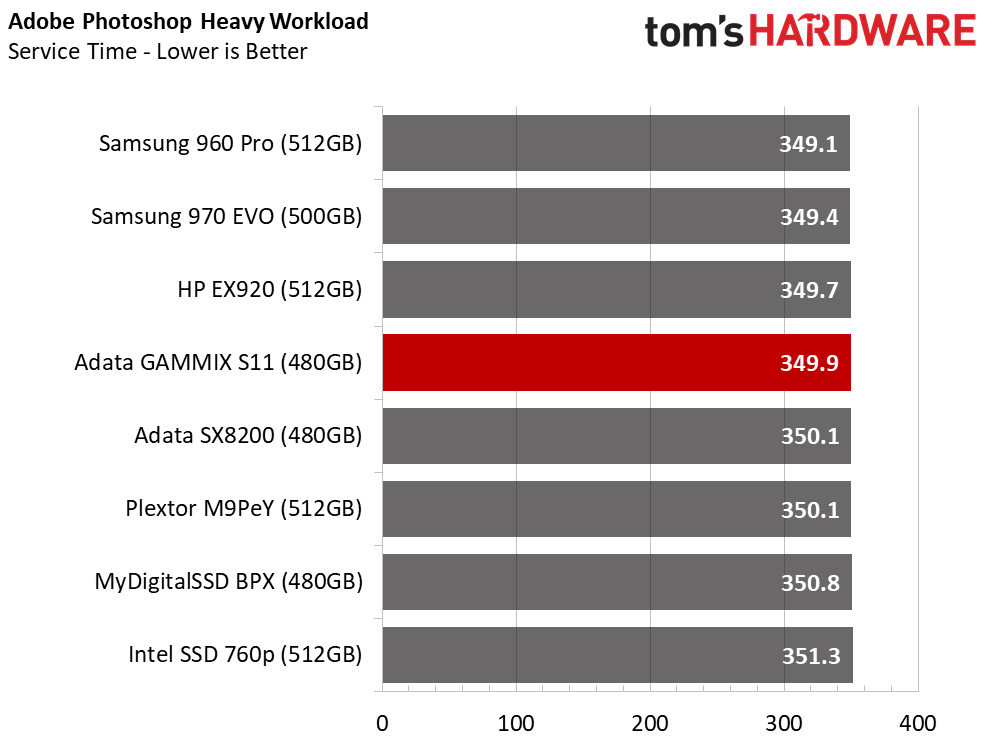
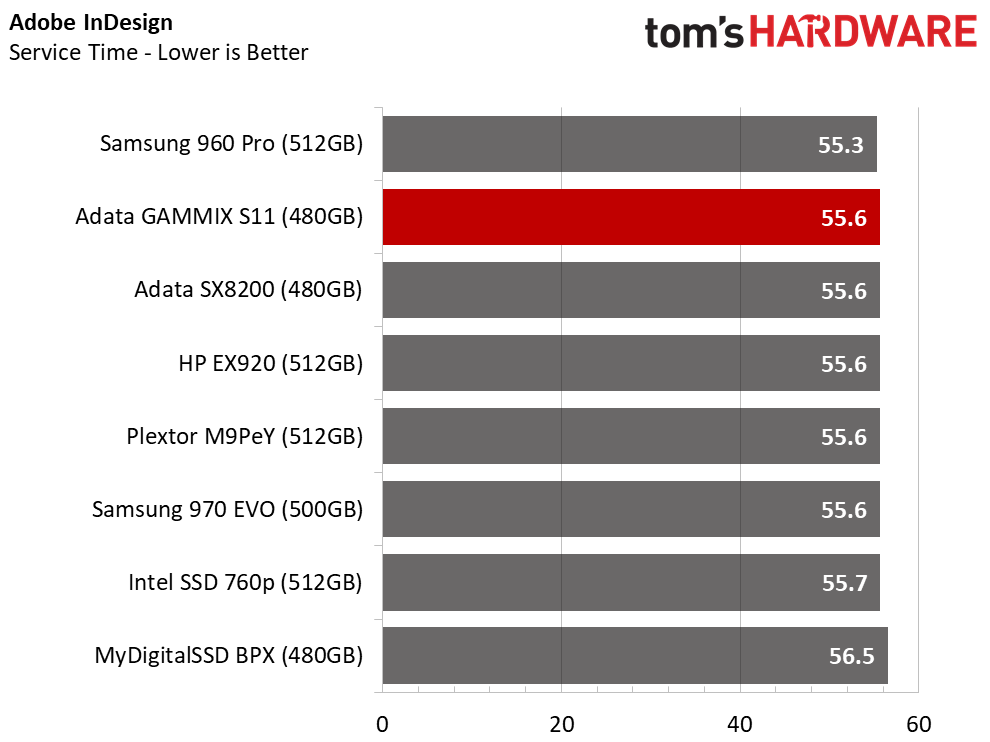
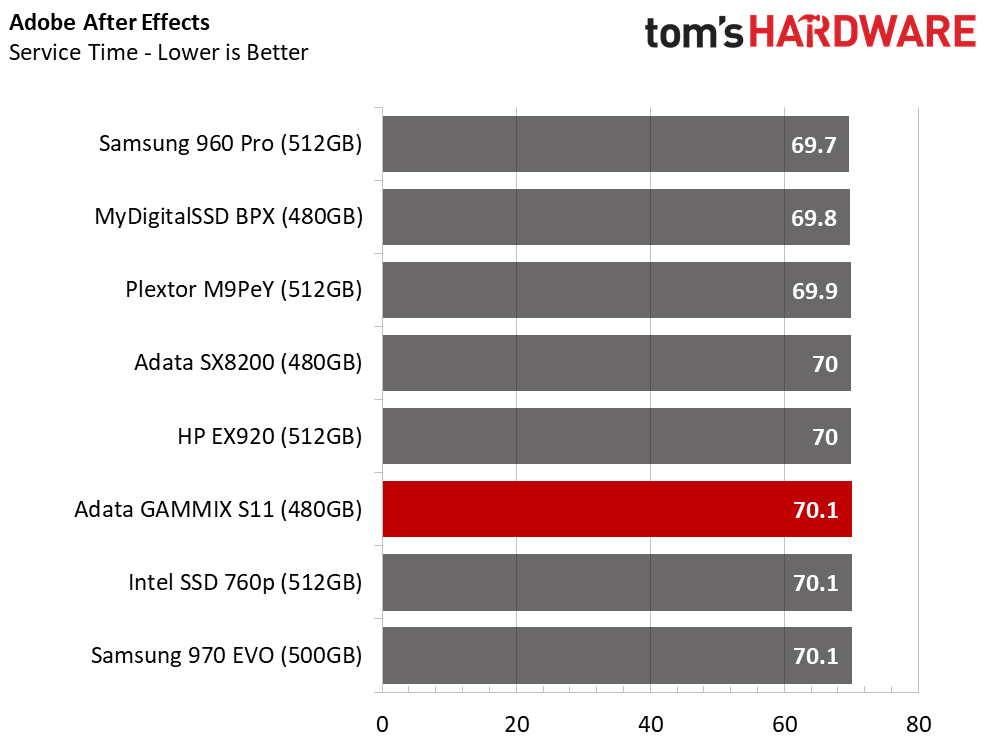
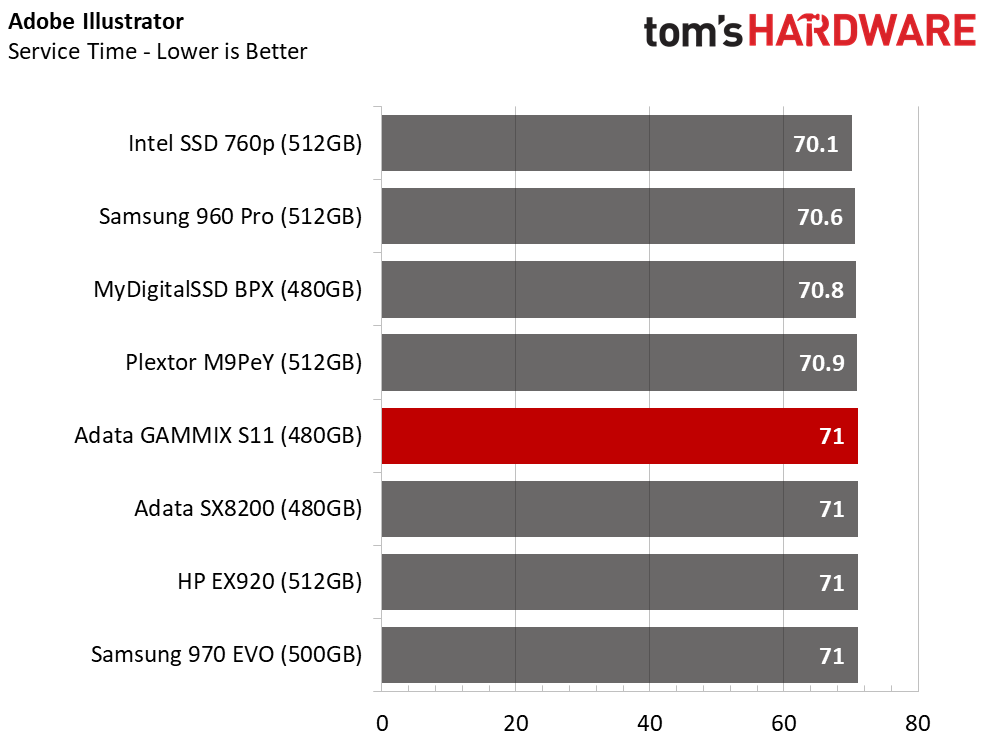
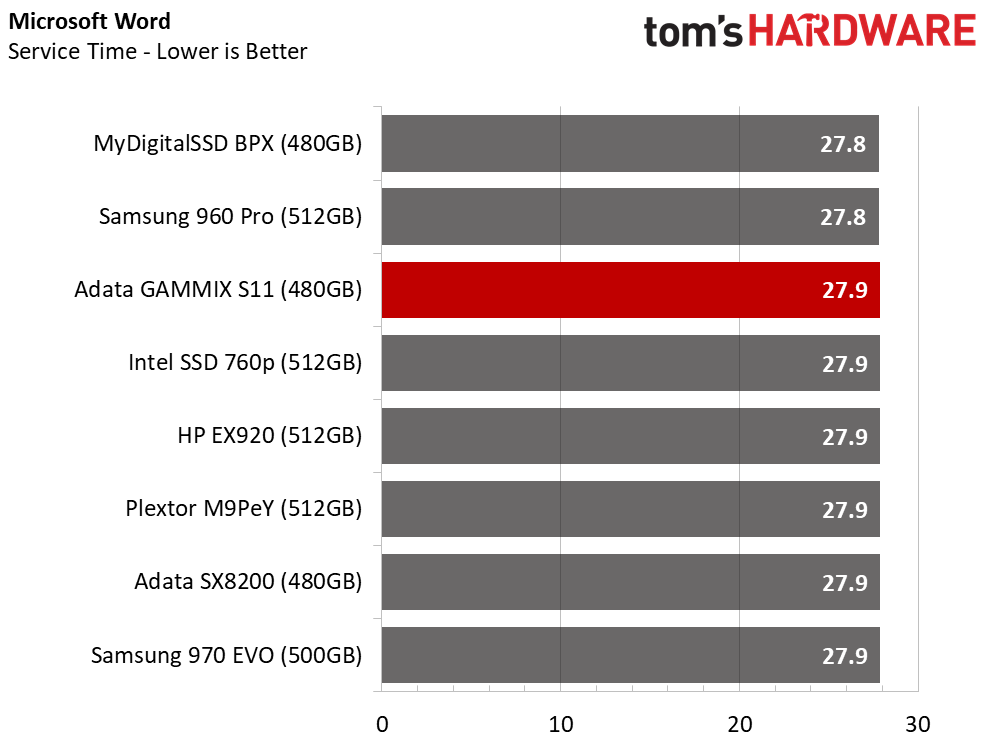

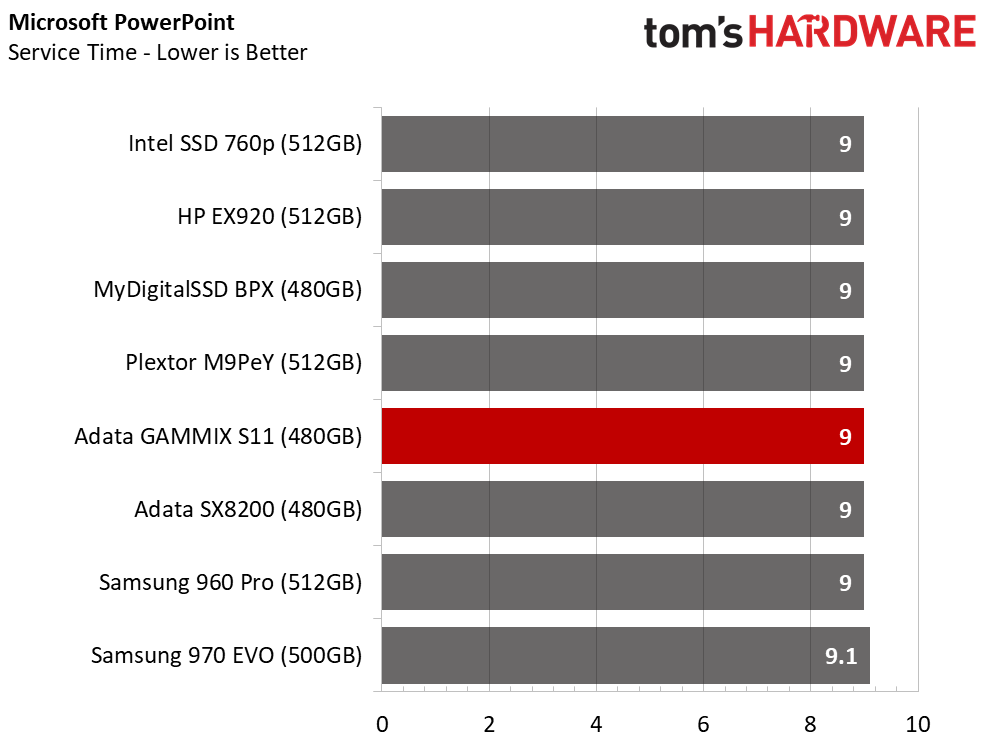
The products are so well matched that application performance is roughly equal when we measure down to tenths of a second. These are all applications many of us use almost daily. We will need a longer and heavier workload to see more separation.
Application Storage Bandwidth
The picture comes into focus with the average throughput measurement. Most of the mainstream NVMe SSDs fall between 500 and 600 MB/s. The two Adata drives barely have a 2MB/s gap between them. This is why pricing is so important for mainstream NVMe SSDs. The performance is so similar, and the typical consumer workload is so mild in relation to what these SSDs can do, that usually the cheaper product instantly becomes the better overall value.
PCMark 8 Advanced Workload Performance
To learn how we test advanced workload performance, please click here.
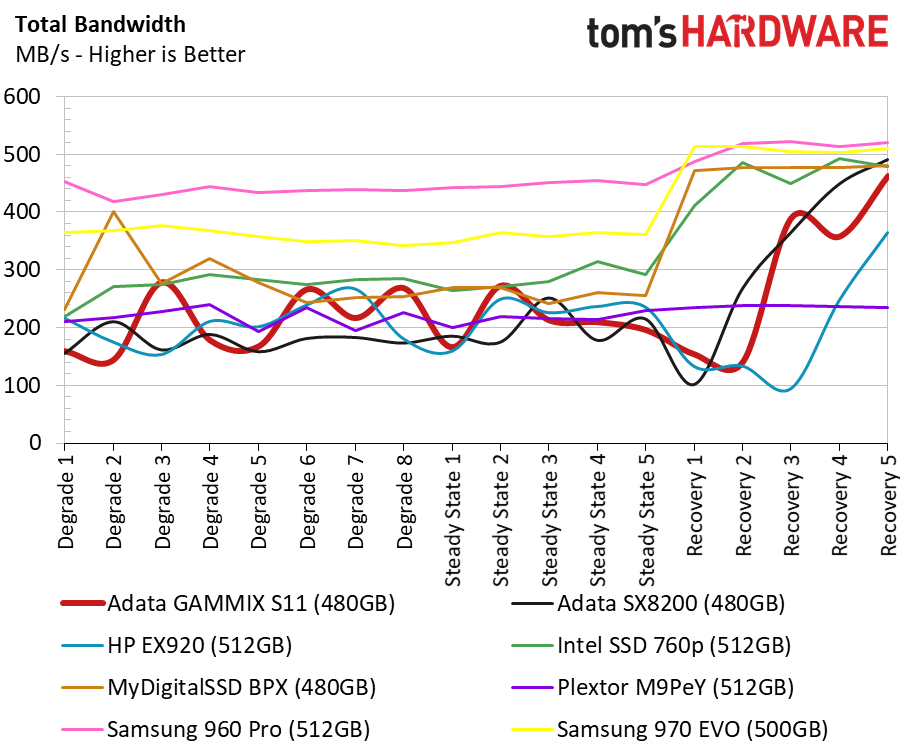

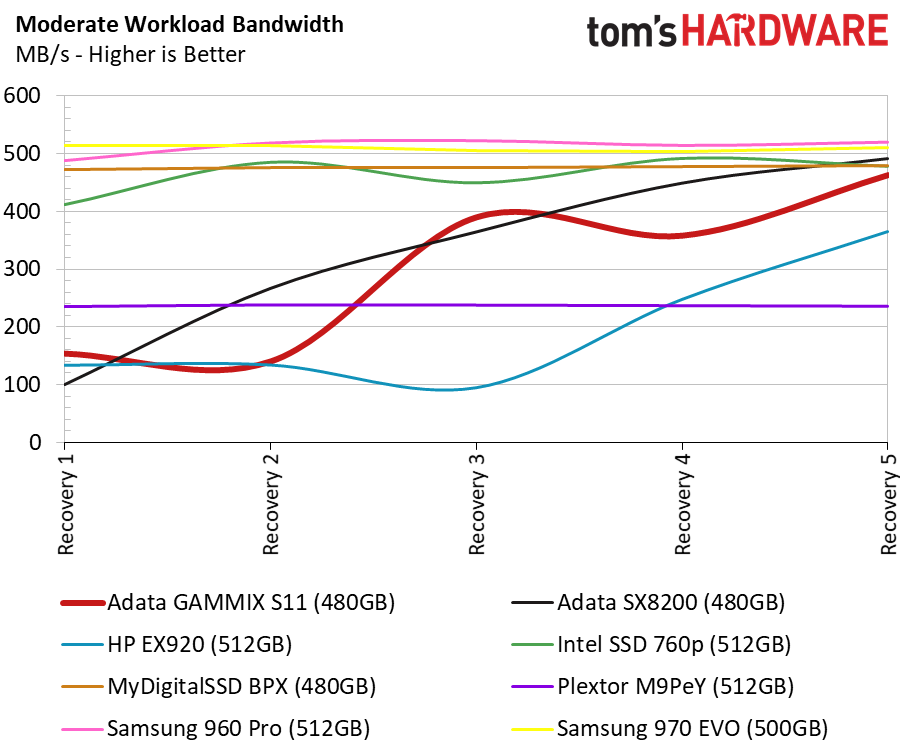
At times, you have to dive into extreme use cases to really spot the differences between many of these products. For instance, under very heavy workloads the Samsung NVMe SSDs still have a distinct performance advantage. When the workload weakens, the performance gap shrinks.
The Adata GAMMIX S11 suffers from the same slow recovery we found with the SX8200 and HP EX920. The drives take longer to recover after a session of heavy data writes.
Total Service Time
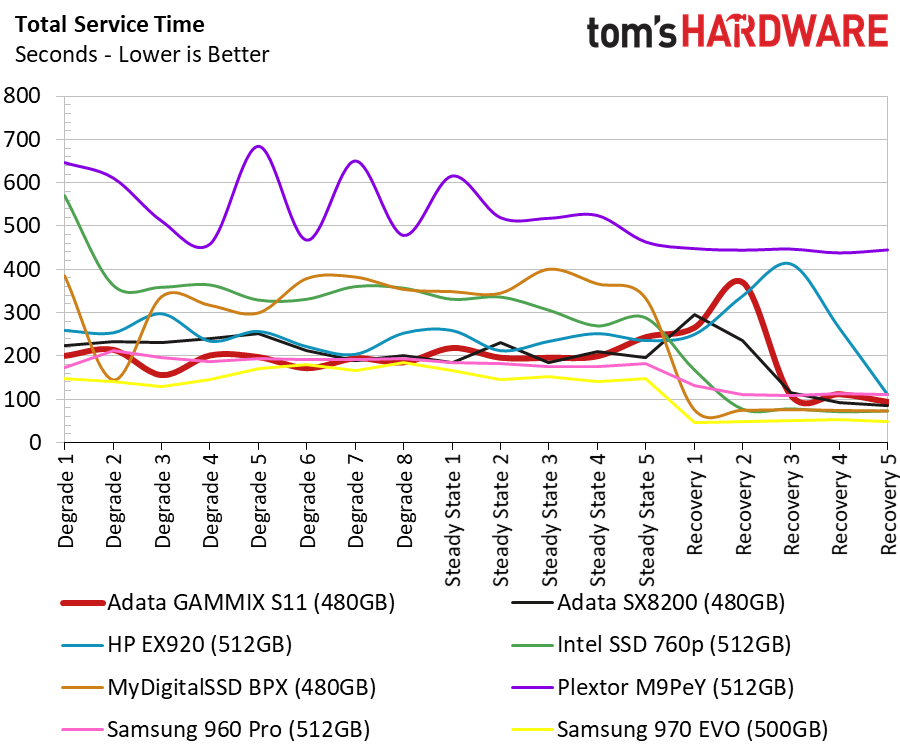
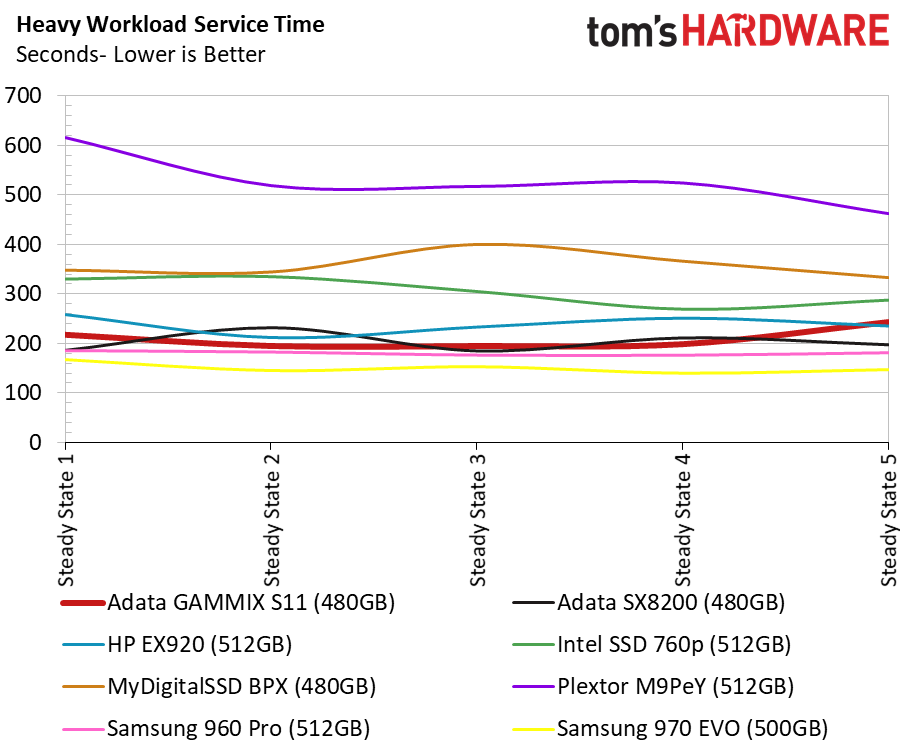
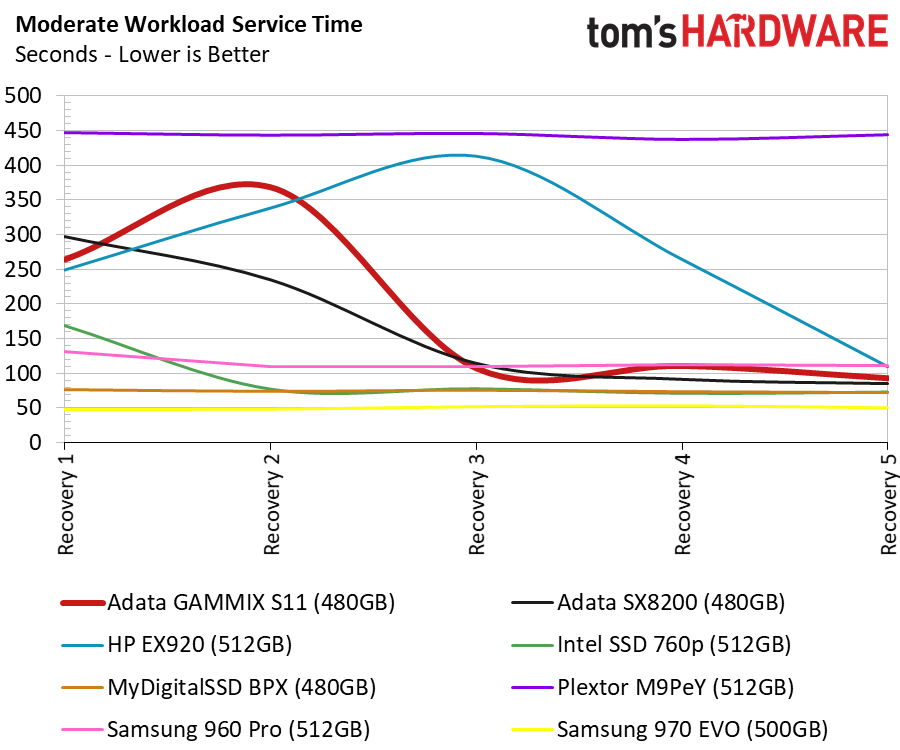
The slow recovery presents itself to the user in the form of increased latency, which makes your system feel slow and sluggish.
Disk Busy Time
The disk busy time results show us how long the drives worked instead of how long it took the system to receive a completion message. In their idle state, most SSDs move into a low power mode. The faster a drive can complete the workload, the quicker it can return to idle to save power.
BAPCo SYSmark 2014 SE Responsiveness Test
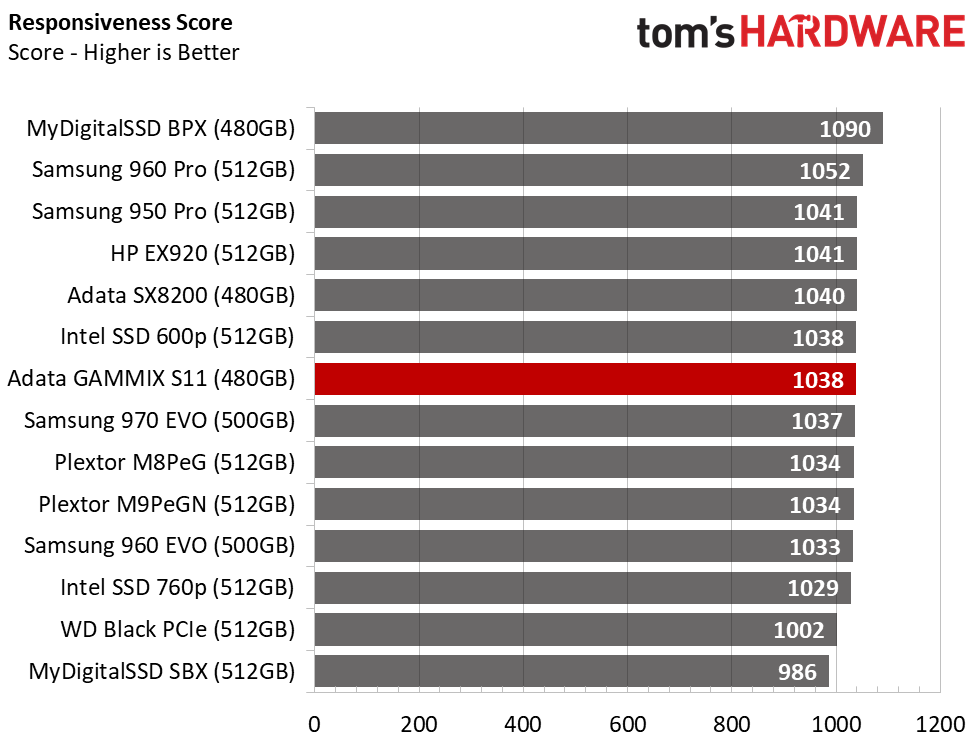

We added even more drives to the system responsiveness test to get a better picture of the market. Most of the drives here perform at, or better than, the OEM version of the Samsung 850 EVO that BAPCo used to record the base score of 1000.
The mainstream Adata XPG GAMMIX S11 performed better than many of the other drives and landed in the middle of the pack. The SX8200 is close, but its price makes it a better value because you get a basic heatsink for free. It may be void of the attractive colors, but it actually works.
BAPCo MobileMark 2012.5 Notebook Battery Life
To learn how we test advanced workload performance, please click here.
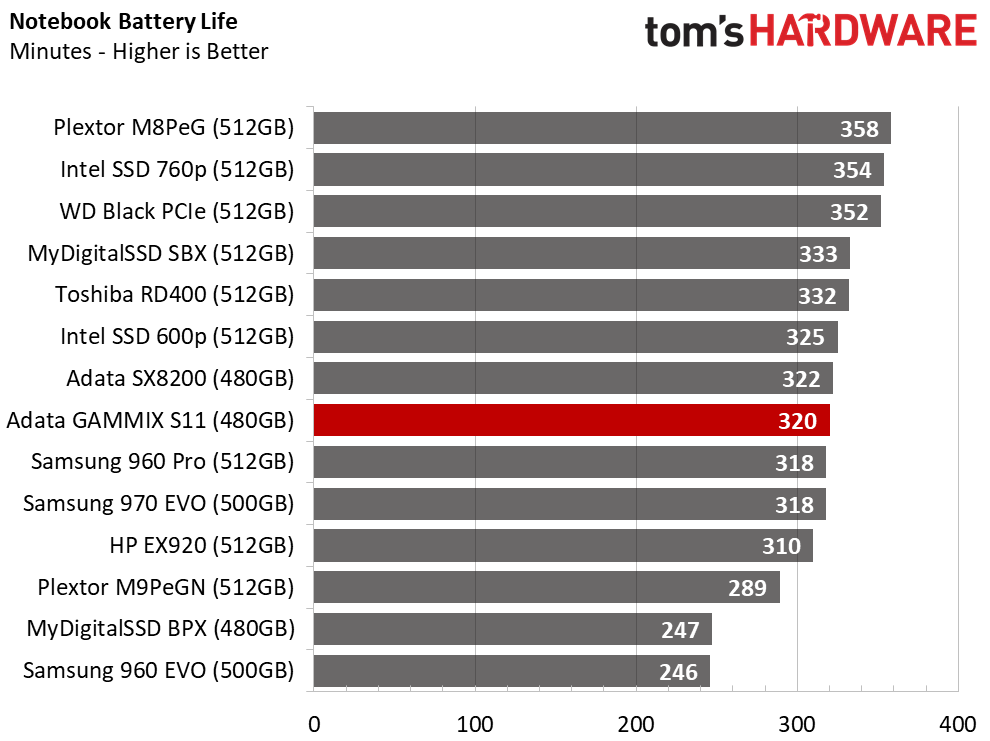

We didn't have any issues installing the GAMMIX S11 in our Lenovo Y700-17 gaming notebook even though the heat sink moves it out of compliance with the M.2 specification. That may not be the case in your notebook, so we wouldn't recommend buying this drive over the SX8200 for use in a notebook because you may have to remove the larger heat sink so the drive fits in your system.
The GAMMIX S11 provided average battery life compared to other mainstream SSDs. There are better options available for battery life, but you could also do much worse if you don't do your research.
MORE: Best SSDs
MORE: How We Test HDDs And SSDs
MORE: All SSD Content
Current page: 512GB Class Performance Testing
Prev Page Features and Specifications Next Page Conclusion
Chris Ramseyer was a senior contributing editor for Tom's Hardware. He tested and reviewed consumer storage.
-
krokozavrex In our market, S11 cost 5$ LESS than SX8200;) so do not be so cruel to S11, it is just a colour option:)Reply

